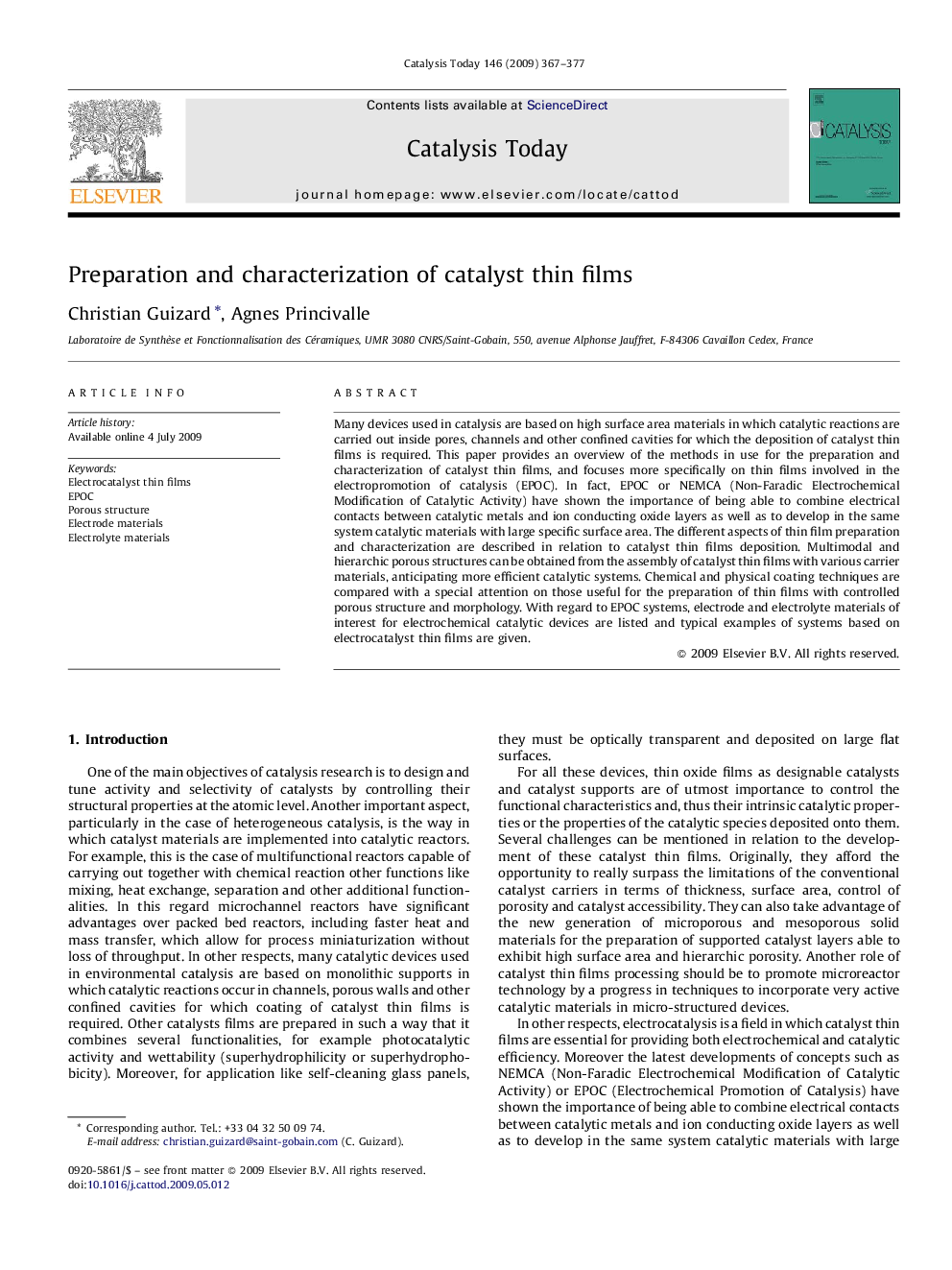| Article ID | Journal | Published Year | Pages | File Type |
|---|---|---|---|---|
| 56895 | Catalysis Today | 2009 | 11 Pages |
Many devices used in catalysis are based on high surface area materials in which catalytic reactions are carried out inside pores, channels and other confined cavities for which the deposition of catalyst thin films is required. This paper provides an overview of the methods in use for the preparation and characterization of catalyst thin films, and focuses more specifically on thin films involved in the electropromotion of catalysis (EPOC). In fact, EPOC or NEMCA (Non-Faradic Electrochemical Modification of Catalytic Activity) have shown the importance of being able to combine electrical contacts between catalytic metals and ion conducting oxide layers as well as to develop in the same system catalytic materials with large specific surface area. The different aspects of thin film preparation and characterization are described in relation to catalyst thin films deposition. Multimodal and hierarchic porous structures can be obtained from the assembly of catalyst thin films with various carrier materials, anticipating more efficient catalytic systems. Chemical and physical coating techniques are compared with a special attention on those useful for the preparation of thin films with controlled porous structure and morphology. With regard to EPOC systems, electrode and electrolyte materials of interest for electrochemical catalytic devices are listed and typical examples of systems based on electrocatalyst thin films are given.
